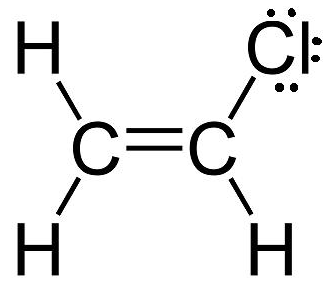
What is the formal charge on each atom in
Answer
434.7k+ views
Hint: We know that the formal charge of an atom says about the charge that is assigned to it in a molecule and it can be calculated if you know about the number of valence electrons, number of nonbonding electrons or lone pair of electrons and the total number of sigma bonds which is shared in covalent bond of that atom in its ground state.
Complete answer:
The charge assigned to an atom in a molecule is known as formal charge.
Formal charge is the charge we would assign to an atom in a molecule if we assume that the electrons in the bonds the atom makes are shared equally between itself and the other atom, regardless of the two atoms' electronegativity. In order to determine the formal charges on all the atoms in

The vinyl chloride molecule has
Now compare this number to the atom's valence electrons. Since carbon has
The same reasoning applies to each of the three hydrogen atoms as well. Each hydrogen atom forms a
Note:
Remember that The valence electrons are the electrons which are present in the outermost shell of an atom and these can take part in chemical bonding. The non-bonding electrons are those electrons which do not take part in the chemical bonding and they are also referred to as lone pairs of electrons.
Complete answer:
The charge assigned to an atom in a molecule is known as formal charge.
Formal charge is the charge we would assign to an atom in a molecule if we assume that the electrons in the bonds the atom makes are shared equally between itself and the other atom, regardless of the two atoms' electronegativity. In order to determine the formal charges on all the atoms in

The vinyl chloride molecule has
Now compare this number to the atom's valence electrons. Since carbon has
The same reasoning applies to each of the three hydrogen atoms as well. Each hydrogen atom forms a
Note:
Remember that The valence electrons are the electrons which are present in the outermost shell of an atom and these can take part in chemical bonding. The non-bonding electrons are those electrons which do not take part in the chemical bonding and they are also referred to as lone pairs of electrons.
Recently Updated Pages
Express the following as a fraction and simplify a class 7 maths CBSE

The length and width of a rectangle are in ratio of class 7 maths CBSE

The ratio of the income to the expenditure of a family class 7 maths CBSE

How do you write 025 million in scientific notatio class 7 maths CBSE

How do you convert 295 meters per second to kilometers class 7 maths CBSE

Write the following in Roman numerals 25819 class 7 maths CBSE

Trending doubts
State and prove Bernoullis theorem class 11 physics CBSE

What are Quantum numbers Explain the quantum number class 11 chemistry CBSE

Write the differences between monocot plants and dicot class 11 biology CBSE

Who built the Grand Trunk Road AChandragupta Maurya class 11 social science CBSE

1 ton equals to A 100 kg B 1000 kg C 10 kg D 10000 class 11 physics CBSE

State the laws of reflection of light




